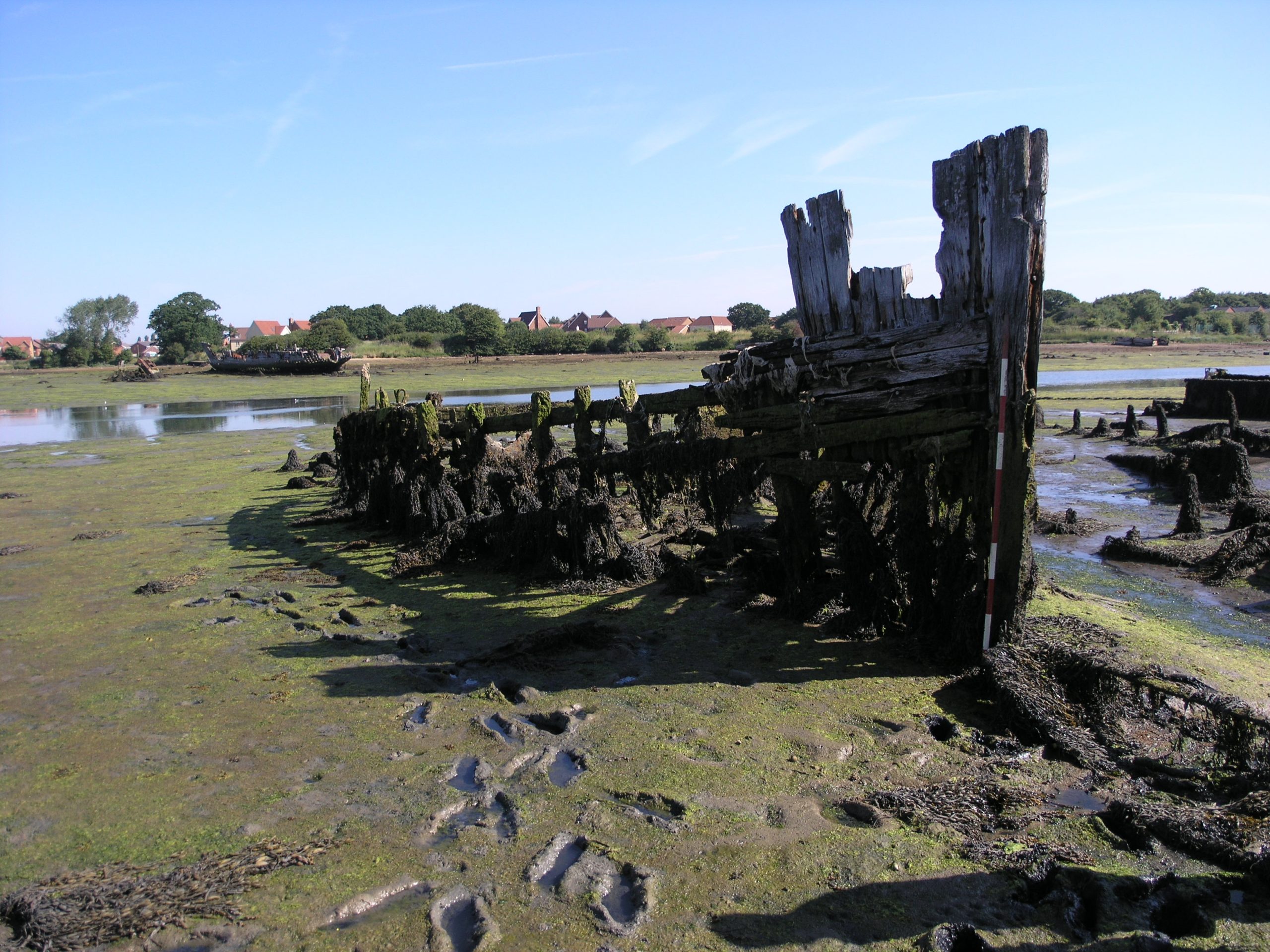In 2006 The Nautical Archaeology Society and the MAT were awarded a grant from the Local Heritage Initiative to carry out a community based project at Forton Lake, Gosport, Hampshire.
The main aims of the project were to allow the local inhabitants of Gosport to research, record, and display their maritime heritage. At the same time the intention was to gather more information about the potential archaeological remains at Forton Lake, which at the time was limited to brief knowledge of the hulks in the area. A visual inspection and survey was undertaken by Ted Sutton in 1997, the results of which were placed with the Hampshire County Council Historic Environment Record.
2009 was the third and final season of fieldwork for the Forton Lake Archaeology Project which brought the MAT and the Nautical Archaeology Society together to investigate and record the substantial hulk remains within this tidal creek. Over the previous two years work was carried out in the field, in the archives and talking to local residents, to learn as much as possible about the sites and their history. Year three fieldwork was targeted at completing detailed site surveys and undertaking excavation on those sites believed to be the most significant.

One of the key aspects of this project has been the involvement of volunteers and students, many of whom are from the local community. They have been taught a range of survey and excavation techniques through a very hands-on, and often muddy, experience. Over the course of the project six vessels were subject to detailed survey, and excavation was carried out on two of the vessles.
The buried vessel at the eastern end of the lake, near the footbridge, provides just one example of the type of information being gathered. This site was located and initially surveyed in 2007. The remains demonstrated potentially interesting characteristics and excavation was undertaken to discover more. The excavation revealed the severed remains of the stern of a robustly constructed flat bottom vessel, most probably a Langstone Barge. The structure encountered proved to be unusual in that the frames were integrated into rebates cut into two large longitudinal timbers at the base of the port and starboard sides. Outer planking was then fastened to the frames by a combination of iron nails and treenails. This displays a form of construction not seen on any of the other hulks recorded at Forton Lake. Further research will hopefully lead to a better understanding of this type of vessel and its history.
Allied to the practical based fieldwork has been a range of education and outreach components of the project. This has included the production of display boards which have been presented at a variety of locations in and around Gosport, and an accompanying project leaflet which has been widely distributed. Understanding the need to involve children with archaeology and their maritime heritage resulted in the development of sessions for school children where they could become a “Maritime Archaeologist for an Hour”. These have been highly popular and judging by the reactions may have encouraged some archaeologists of the future.
Forton Lake has been an exemplary project for demonstrating what can be achieved with a team of professional archaeologists working alongside volunteers. The enthusiasm of local residents wishing to know more about their maritime heritage and the keenness of students wanting to develop their skills has achieved significant results. There has been an impressive amount of archaeological data gathered, but also progress for wider objectives of improving understanding of conservation issues related to maritime heritage and enhancing the archaeological skill base of all those concerned.
The results from the project have been published in Forton Lake Archaeology Project – Forton’s Forgotten Fleet, available here. More detailed results of the Forton Lake Archaeological Project have been published as an academic monograph by the NAS. This hulk was also investigated as part of the Forgotten Wrecks of the First World War project, and the archaeological report for it can be found here.
